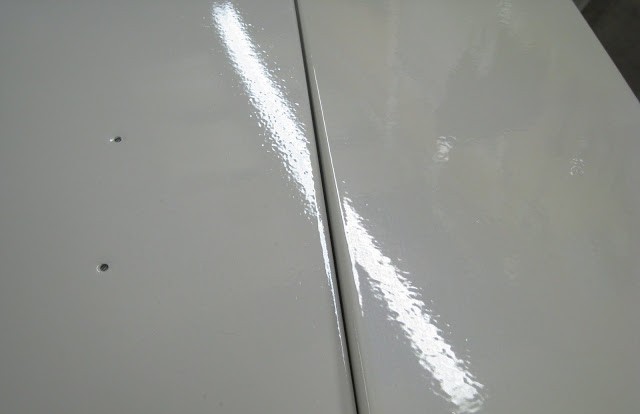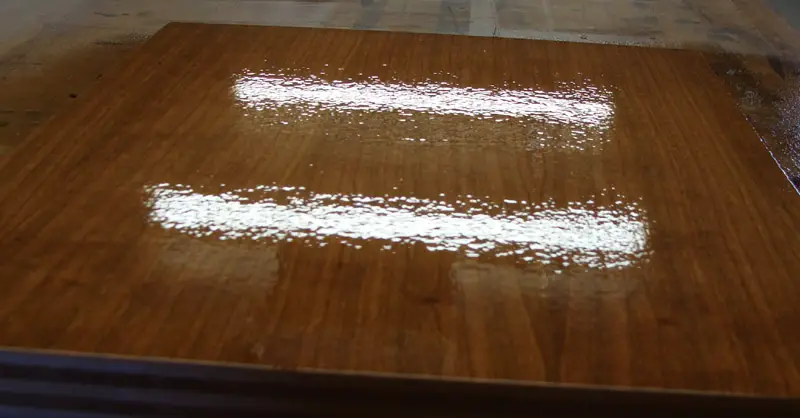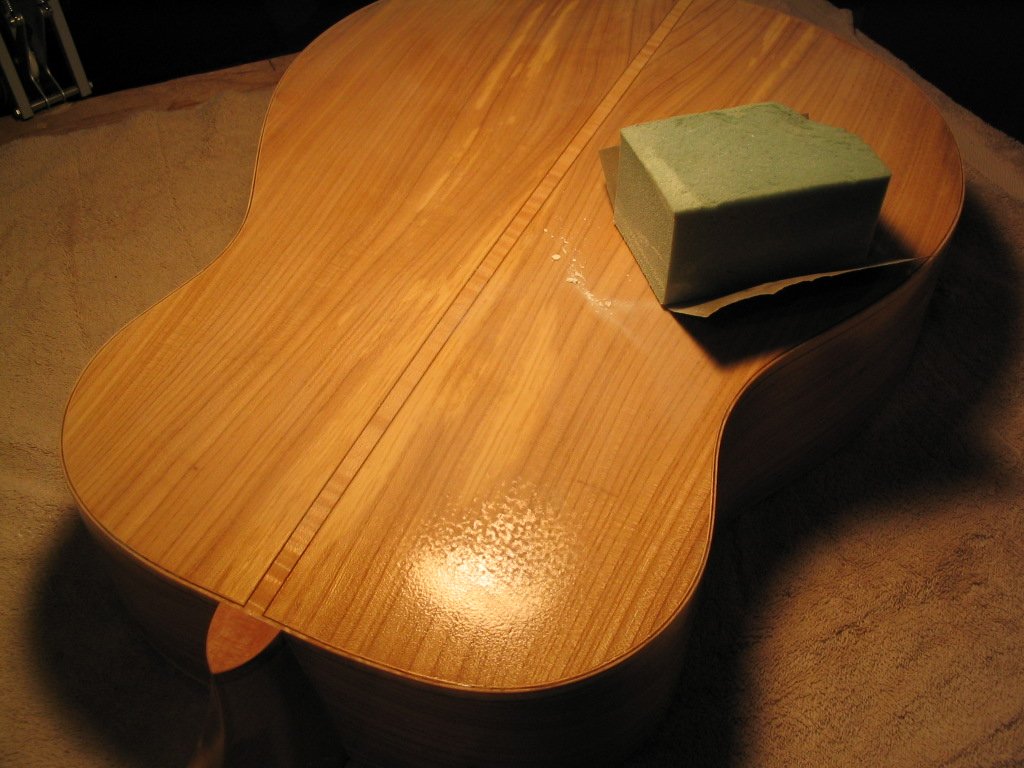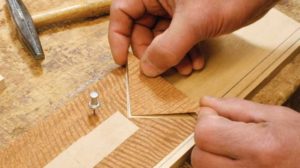In order to look good, furniture is finished according to certain conditions and rules. If they are not followed correctly, there may be areas on the surface that don't look the way you intended. These are commonly called finishing defects. The orange-peel appearance of the film is perhaps the best known of these defects. Here's how it happens, why it's called that and how it can be fixed.

Insufficient time to stretch the film causes orange peel defect
It is called this because after drying, the film is not perfectly smooth as it should be, but looks like an orange peel. The defect is visible immediately after varnish application, but can sometimes disappear as it dries. Orange peel occurs when the finishing material does not have the time or conditions to spread very well on the wooden substrate.
Film-forming products are viscous materials that need time to spread perfectly. If the laying time is longer than the time it takes for the film to dry superficially, the defect will remain even after the film has completely dried.
The drying time can be adjusted with the thinner. Less than the recommended amount of thinner means a more viscous product that will take longer to set. If the thinner evaporates faster than this time orange peel will appear. The quality of the thinner is also important. Even if you add the recommended amount but it evaporates too quickly, the defect will appear. You will have to use a slower thinner or add a quantity of very slow thinner that delays drying.
Conditions in the application area are also important and can influence the appearance of the film. A large temperature difference between the wood substrate and the applied material can result in orange peel film. The temperature of the finishing material, the wood substrate and the environment should be between 18 and 20°C. Also, low air humidity in the application area influences the drying time leading to the defect.

Other causes of the defect
Too little distance between spray gun and workpiece or too high pressure may result in an orange-peel film. When spraying by hand, the spray gun should be held at least 25 cm away from the part and the pressure should be 2.8-3 atm. There is often a tendency to increase the pressure, giving the sprayer the feeling of higher productivity. It may move faster, but film quality will suffer. When applying with pumps or robot sprayers it is very important to follow the manufacturer's recommendations.
Excess air in the application or drying area are other causes that lead to defective film. Currents are basically created which reduce the drying time and sometimes spoil the appearance of the film.
How to fix the defect
If the defect appears when applying the primer and is not very pronounced, it is removed by sanding between coats. This requires more effort, however, in the case of manual sanding, and a higher consumption of sanding paper.
If the defect is very pronounced, sanding between coats will not be able to remove it, and subsequent coats will accentuate it.
When varnish is applied, the higher the gloss of the varnish, the more annoying and visible the orange-peel look is. To remove it, the surface needs to be polished. This is all the more important the higher the gloss of the lake.
One method used to remove the orange peel effect from nitrocellulose varnish films in the past is equalizing. It consisted in wiping the film with a mixture of solvents called equalizer (butyl acetate, butyl alcohol). Workers used to do this directly by hand, without gloves. Sometimes the equalizer was sprayed on top of the film. This softened the film again, and the long evaporation time of some of the components allowed the film to stretch. This was only true of nitrocellulose varnishes and paints, which were softened again after drying in the presence of organic solvents.

I hope you find the information useful. If you have any questions or queries, please leave them below in the space provided. I will be sure to reply.
Other finishing flaws you can read about:




































[...] Finishing defects - Orange peel [...]
[...] Orange peel [...]
[...] Orange peel [...]
[...] Orange peel [...]
[...] to lie on as flat a surface as possible. If the varnish does not spread very well, orange peel appears and influences the gloss level. Always use the recommended thinner for [...]